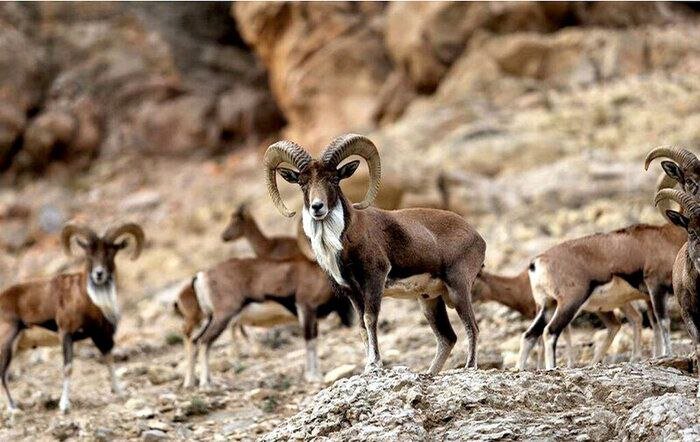Wild goat population in private protected areas up by 21%

TEHRAN –The number of wild goats (Capera aegagrus) in private protected areas across the country has grown by 21 percent compared to the past Iranian year (March 2023-March 2024), an official with the Department of Environment (DOE) has said.
“Also, the population of rams and ewes has risen by an increase of 10 percent in the same period, indicating the effective performance of private sectors, the successful cooperation of public and private sectors in environmental conservation which has reduced environmental preservation costs, as well,” IRNA quoted Hamid Zohrabi as saying.
“According to the latest censuses, a total of 6,093 animals including 3,384 rams and ewes and 2,709 wild goats have been counted in four private protected sectors in Yazd (2), Semnan (1), and Kerman (1) provinces.
Private sector runs five protected areas
There are five private protected areas across the country measuring some 275,000 hectares.
The protected areas started activity in the Iranian calendar year 1392 (March 2013-March 2014). Three of the protected areas are located in the central province of Yazd, one in the south-eastern province of Kerman, and one in the northcentral province of Semnan.
The population of species such as goats, rams, and sheep in these areas has increased by three to eight times, IRNA reported.
Throughout the year, the conditions of the habitats and the wildlife are monitored. The wildlife population in the protected areas is counted twice a year, in spring and winter.
Private protected areas do not receive any government grants or funds, their income comes from issuing hunting licenses, which are issued by the Department of Environment after the census and approval of the wildlife population.
Accordingly, legal hunting permits are issued every year proportionate to the increase in the population of each species.
The Department of Environment tends to develop the number of private protected areas as one of the successful methods of people’s participation in preserving biodiversity.
The increase of these areas is on the agenda, and 36 areas have been considered for this purpose, which will be given the needed license following legal steps.
****Protected lands expand to 19.5m ha
Five new protected areas, measuring 230,000 hectares, have been created across the country, expanding the protected areas to 19.5 million hectares.
The protected areas under the supervision of the Department of Environment (DOE) now account for 11.8 percent of the country’s lands, IRNA reported.
The history of Iran’s first protected areas dates back to 1967 when the proposal for the establishment of two national parks and 15 protected areas as the first protected sites in Iran was approved.
In 1976, there were more than 65 protected areas covering an area of 6.7 million hectares in the country, which has now extended to more than 300 areas with an area of 19.5 million hectares.
The first new protected area with an area of about 63,000 hectares is located in Gavkhoni Wetland with the aim of preventing any change in land use and protecting the vegetation as well as safeguarding the wetland and birds that are present at special times when the wetland is filled with water.
The second site with an area of about 11,000 hectares is Kalate and Tang-e Sorkh located in Fars province. The goal is to preserve the diverse vegetation and pristine wildlife there. It is one of the prohibited hunting zones.
Padena, measuring 30,000 hectares area in the city of Semirom in Isfahan province, is the third added area.
It can enhance the protection of the Dena National Park conservation, which is one of the most important protected areas in Zagros since wildlife moves between these two regions.
With good vegetation and abundant water sources, wildlife can be easily revived. This area was one of the free zones before.
The next area is located in the Kalate desert, covering about 126,000 hectares in the east of Isfahan around Khur and Biabanak. It is home to valuable species such as rams, ewes, gazellas, and Bustards.
The last area, about 200 hectares, is a national natural monument called ‘Sheikh Mohammadlu’ in Ardabil province. It contains a collection of fossil trees dating back to prehistoric geological periods.
MT/MG
Leave a Comment